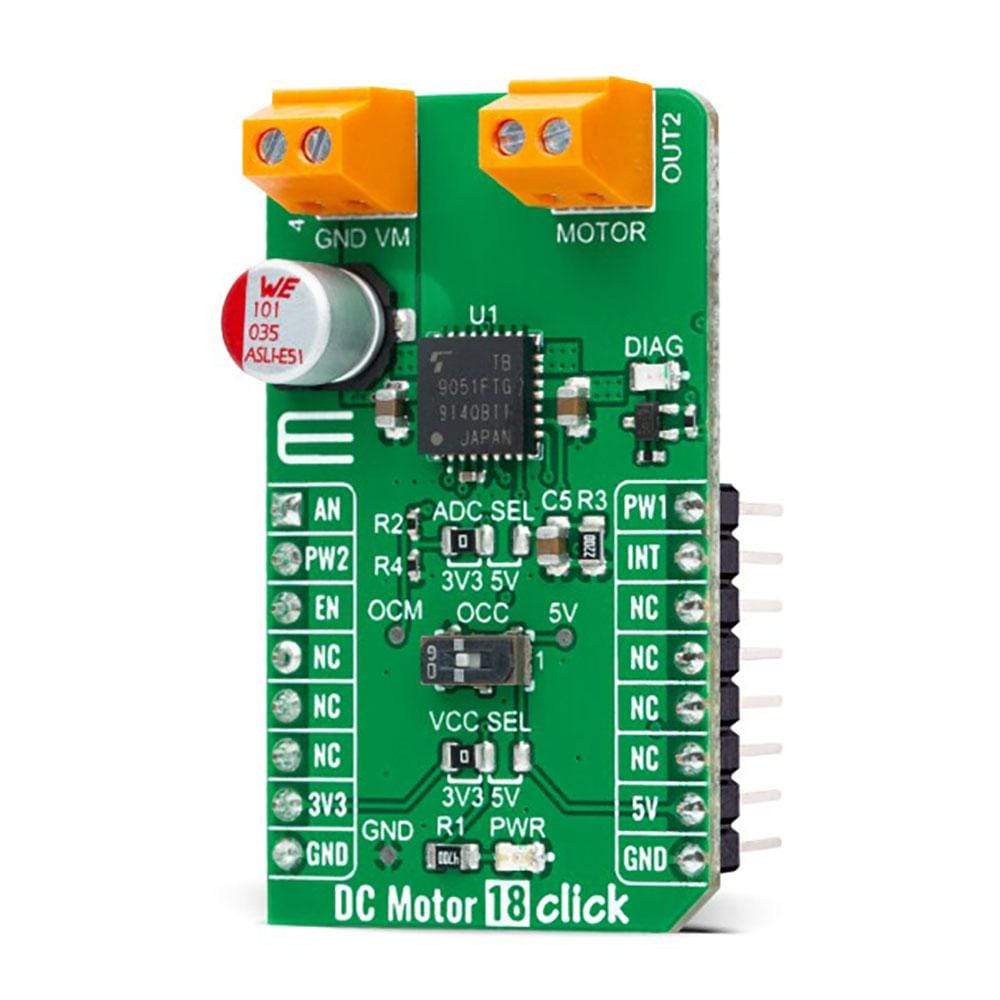
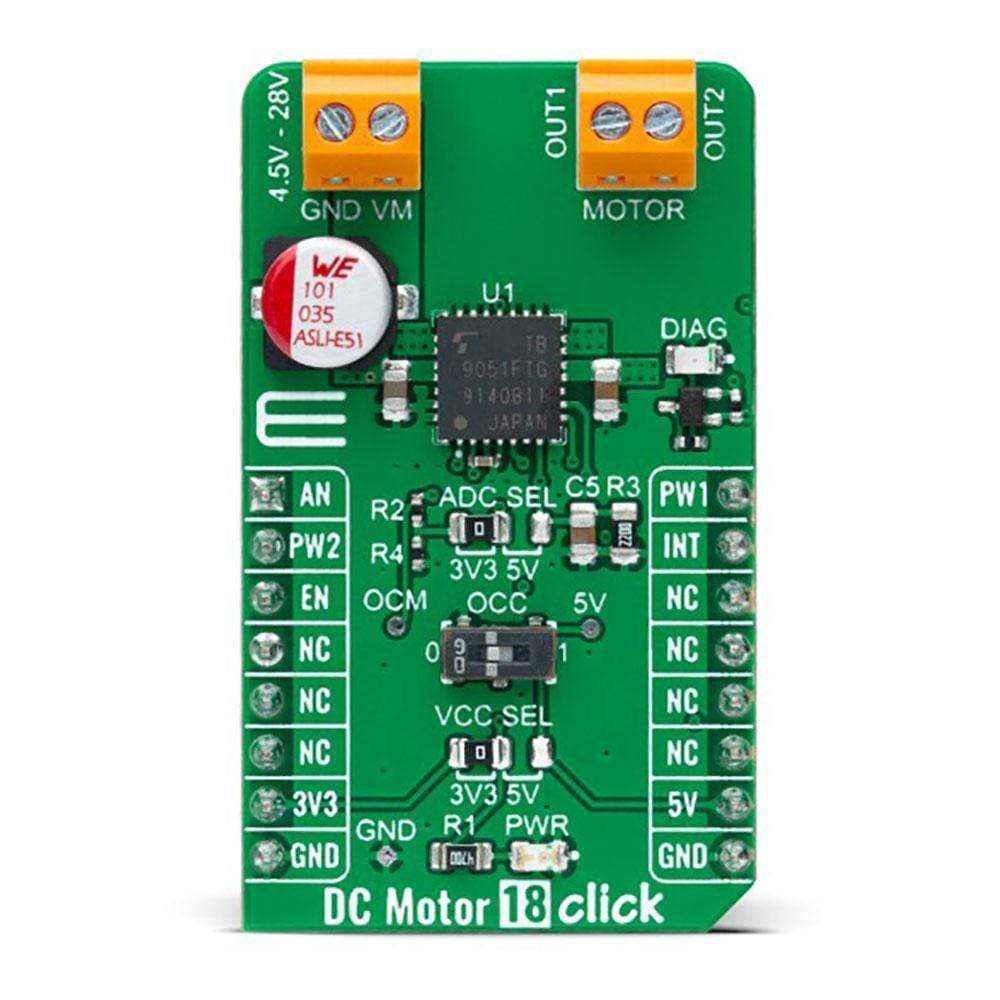
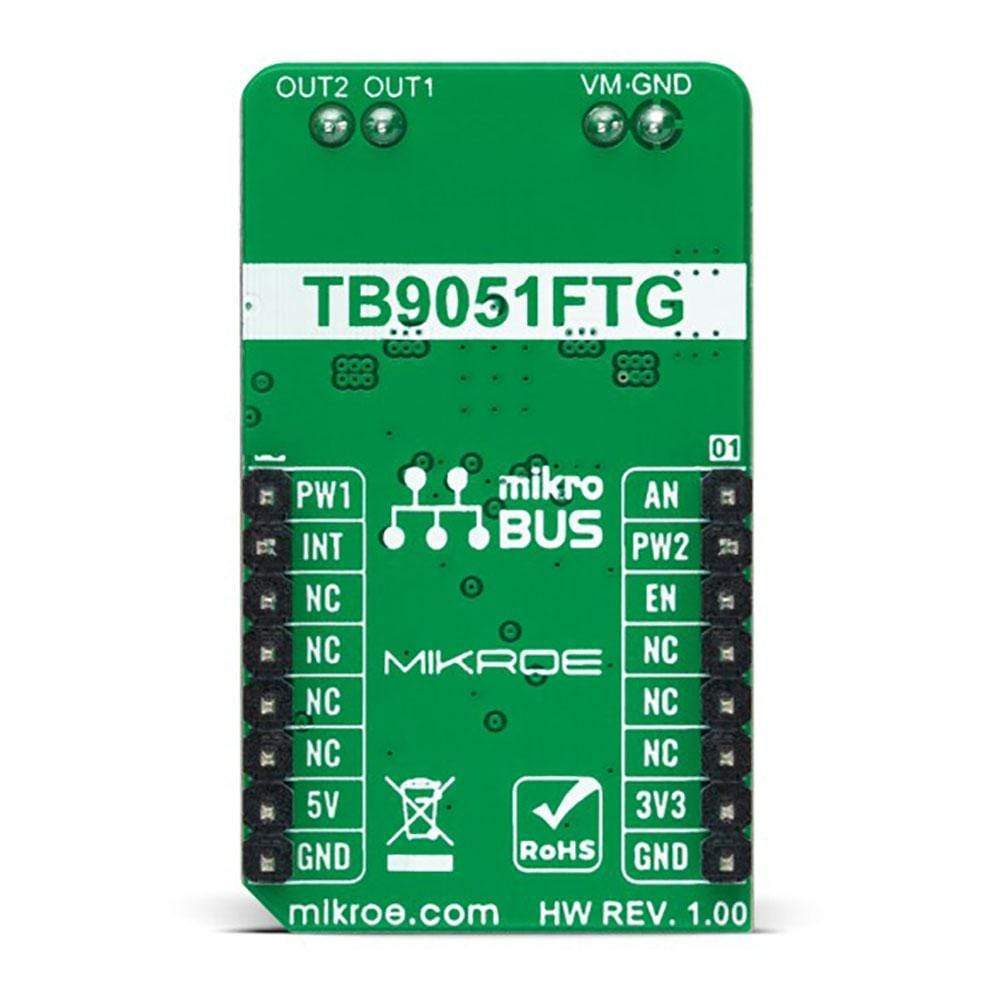
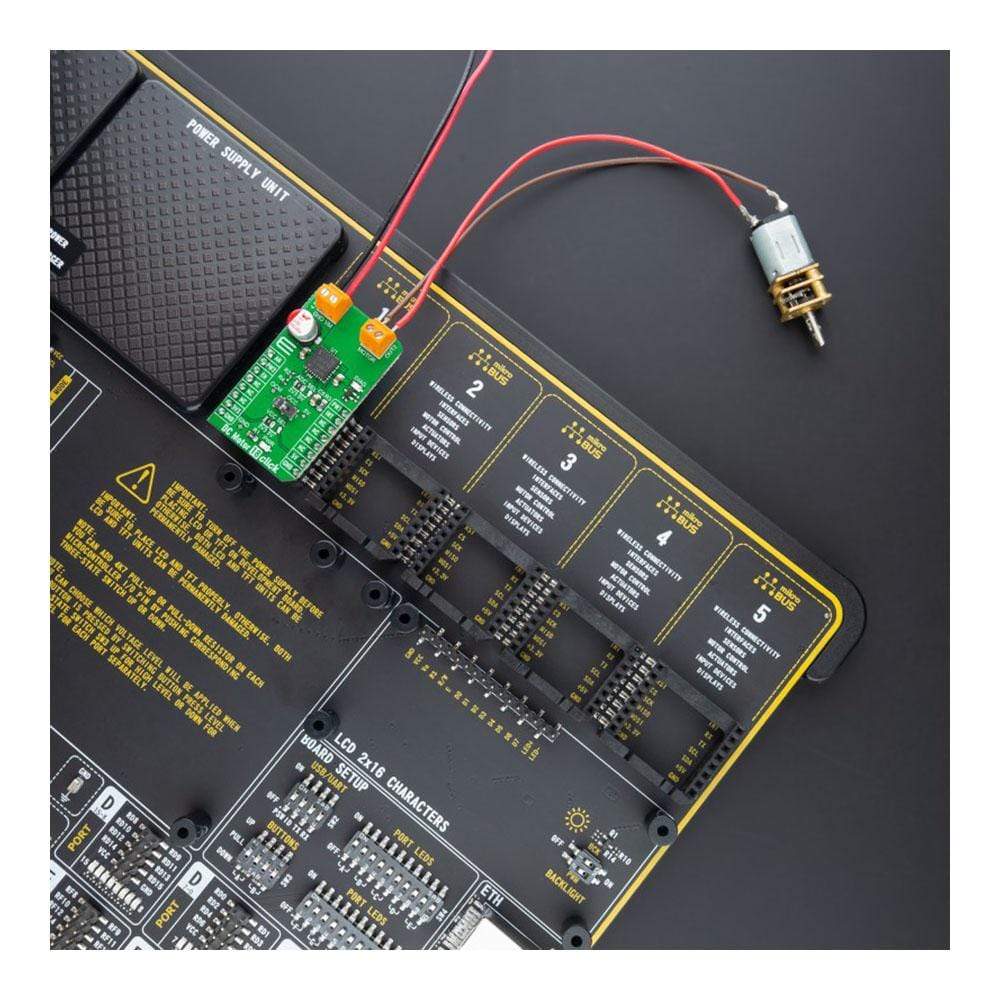
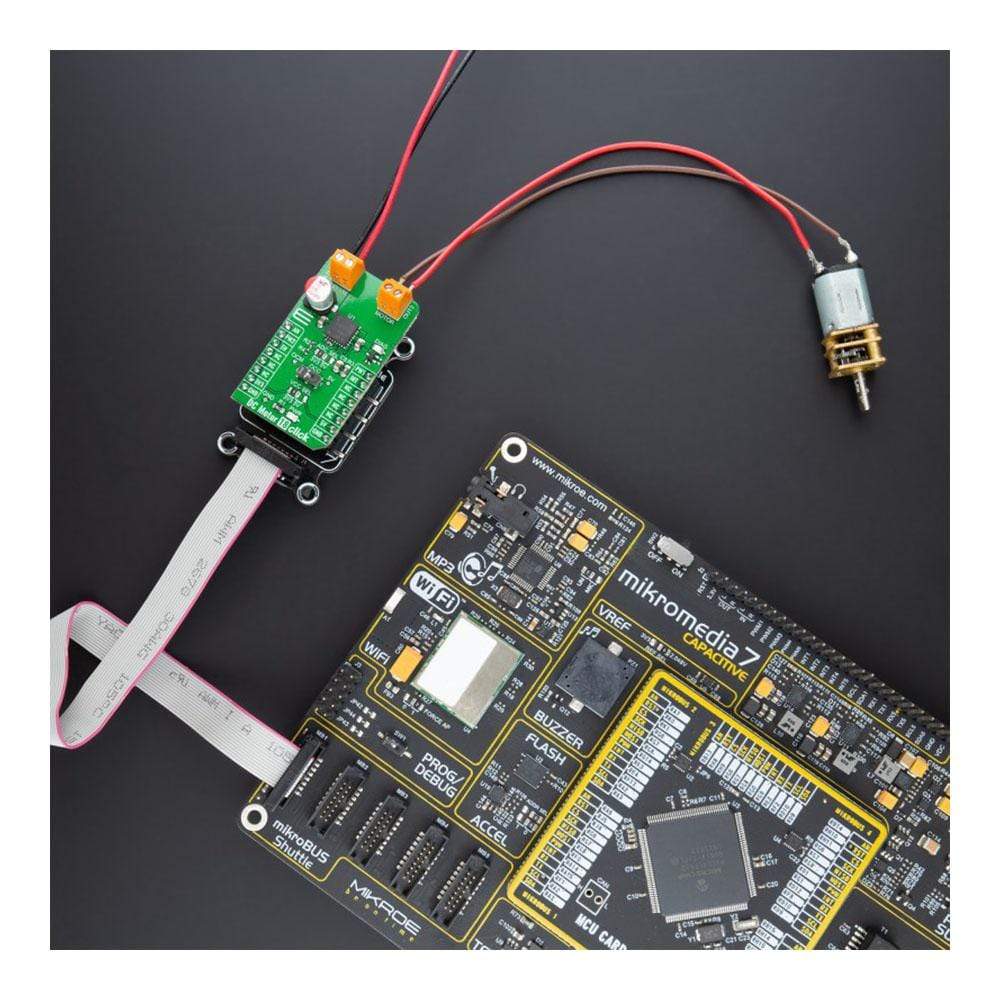
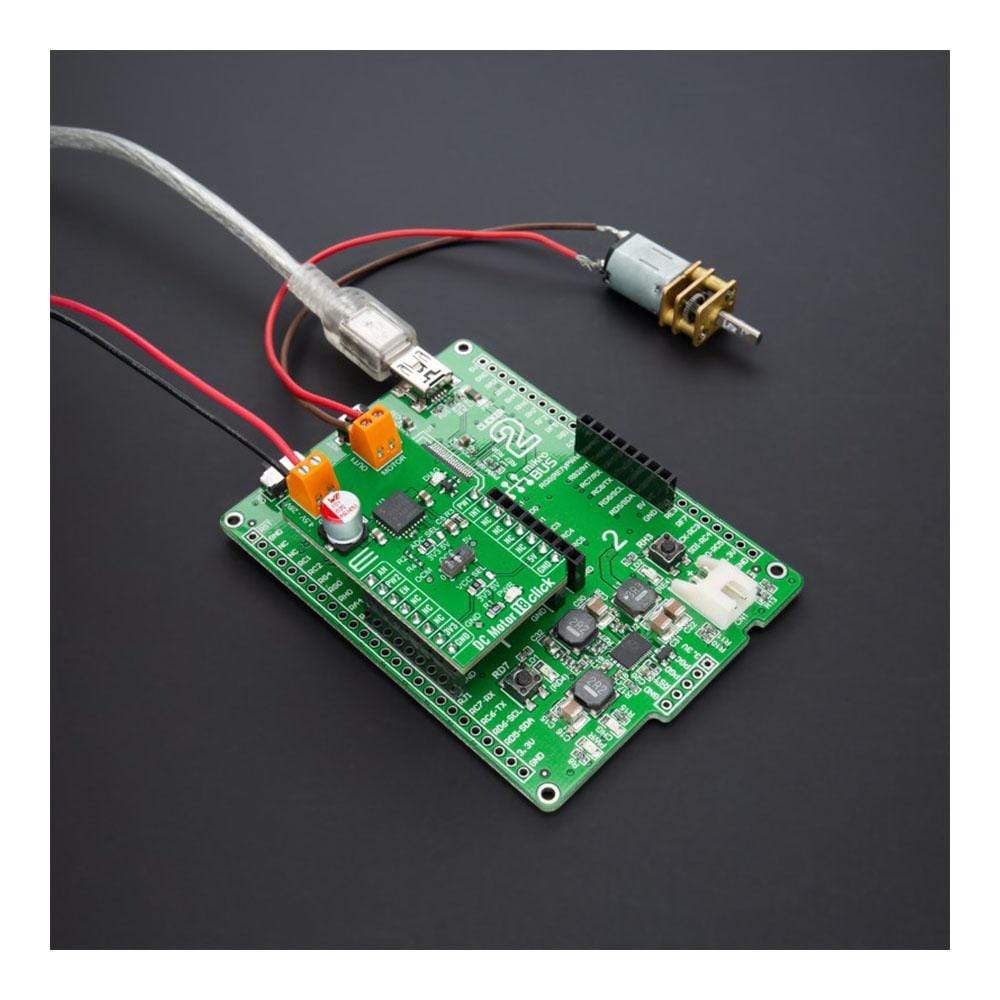
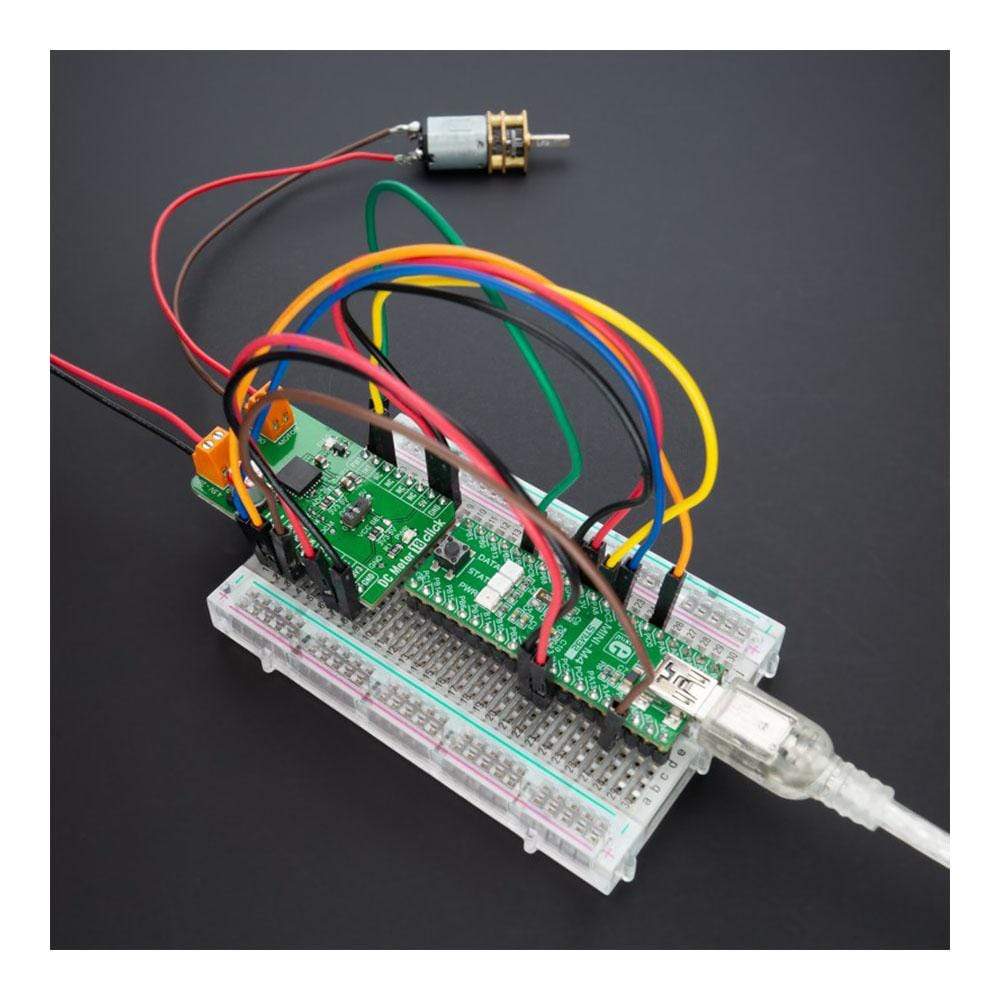
Overview
The DC Motor 18 Click Board™ is a compact add-on board that contains a brushed DC motor driver. This board features the TB9051FTG, an automotive PWM-type single-channel H-Bridge DC brushed motor driver from Toshiba Semiconductor. The Forward/Reverse/Brake mode can be selected according to PWM control signals, while the motor operation and stop mode can be chosen by an enable pin. It has a wide operating voltage range of 4.5V to 28V with an output current capacity of 5A max. Besides, it also features built-in protection against under-voltage, overcurrent, and overtemperature conditions. This Click Board™ is suitable for various automotive applications such as throttle and valve control, various engine bulbs, storing of door mirrors, and seat positioning.
The DC Motor 18 Click Board™ is supported by a mikroSDK compliant library, which includes functions that simplify software development. This Click Board™ comes as a fully tested product, ready to be used on a system equipped with the mikroBUS™ socket.
Downloads
Das DC Motor 18 Click Board™ ist eine kompakte Zusatzplatine, die einen bürstenbehafteten Gleichstrommotortreiber enthält. Diese Platine verfügt über den TB9051FTG, einen einkanaligen H-Brücken-Gleichstrom-Bürstenmotortreiber vom Typ PWM für Kraftfahrzeuge von Toshiba Semiconductor. Der Vorwärts-/Rückwärts-/Bremsmodus kann gemäß PWM-Steuersignalen ausgewählt werden, während der Motorbetrieb und der Stoppmodus über einen Aktivierungsstift ausgewählt werden können. Es verfügt über einen großen Betriebsspannungsbereich von 4,5 V bis 28 V mit einer Ausgangsstromkapazität von max. 5 A. Darüber hinaus verfügt es über einen integrierten Schutz gegen Unterspannung, Überstrom und Übertemperatur. Dieses Click Board™ eignet sich für verschiedene Automobilanwendungen wie Drosselklappen- und Ventilsteuerung, verschiedene Motorbirnen, Aufbewahrung von Außenspiegeln und Sitzpositionierung.
Der Gleichstrommotor 18 Click Board™ wird durch eine mikroSDK-kompatible Bibliothek unterstützt, die Funktionen enthält, die die Softwareentwicklung vereinfachen. Dieses Click Board™ wird als vollständig getestetes Produkt geliefert und ist bereit für den Einsatz auf einem System, das mit der mikroBUS™-Buchse ausgestattet ist.
| General Information | |
|---|---|
Part Number (SKU) |
MIKROE-4786
|
Manufacturer |
|
| Physical and Mechanical | |
Weight |
0.02 kg
|
| Other | |
Country of Origin |
|
HS Code Customs Tariff code
|
|
EAN |
8606027383557
|
Warranty |
|
Frequently Asked Questions
Have a Question?
Be the first to ask a question about this.







